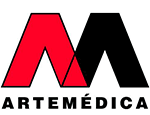Hyaluronic acid
What is hyaluronic acid?
Hyaluronic acid is an injectable and reabsorbable filler used to minimize wrinkles and afford volume in a natural way. Hyaluronic acid is mainly used in application to the lips and bags under the eyes.
It is currently the most widely used filler material, and the product for which most information is available.
Hyaluronic acid is naturally present in almost all body tissues. Its main function is to afford hydration, thanks to its great water retention capacity.
The hyaluronic acid used in aesthetic medicine is of non-animal origin and is obtained synthetically in the laboratory; it is therefore practically impossible for it to produce allergic reactions.
What benefits does it provide?
When infiltrated using filler techniques in the skin, hyaluronic acid affords hydration and volume, thereby reducing wrinkles, and it is able to shape features and moreover contributes elasticity and turgidity to the skin.
However, it also modulates the inflammatory response, pain and cell metabolism, and stimulates the elimination of reactive oxygen species. Due to these latter features, hyaluronic acid is increasingly used for treatment purposes in functional and regenerative gynaecology, in addition to aesthetic gynaecology.
Advantages of treatment
- It is the filler material for which most studies and experience are available
- It does not cause allergies
- It is biodegradable and reabsorbable
- Immediate effects
- Hydration
- Filling and volume enhancing effects
- Ambulatory, non-surgical treatment
- It can be performed at any time.
What zones can be treated with hyaluronic acid?
It is the most versatile of all filler materials and can be used in practically any part of the body.
In order to secure satisfactory results, it is important to choose the formulation with the characteristics that best adapt to the zone we want to fill or the purpose we have in mind.
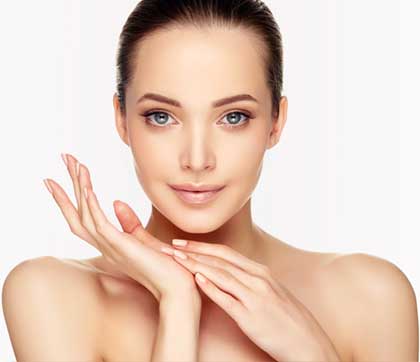
How long does hyaluronic acid last?
Following infiltration, the duration is highly variable, depending on both the physical characteristics of the product and the degradation capacity of each individual patient.
However, within this wide range, the product can last in the body for many months and even for a year or so, while the native molecule (that produced naturally by the body) has a duration of 12-24 hours.
The physical characteristics of the product depend on variables such as particle size, molecular weight, concentration, degree of purity, and especially reticulation.
All these variables define the rheological characteristics of the product, and result in the enormous range of formulations adapted to the different zones we intend to treat.
In principle, increased reticulation, molecular weight, concentration and molecular size is associated with a longer persistence of the product in the body. On the other hand, the body has a number of enzymes (hyaluronidases) that degrade the product and determine the rate at which it is eliminated.
Hyaluronic acid formulations with special characteristics
Skinboosters
Skinboosters are low-density but long-lasting hyaluronic acid fillings that hydrate and nurture the skin in depth, leaving it smoother and brighter.
They are administered as deep microinjections in the dermis, but do not constitute mesotherapy.
Skinboosters are injected in the area of the face, neck and neckline, and stimulate collagen production, improving skin elasticity and structure.
When to use skinboosters
Skinboosters can be used at any time of year.
Who are they intended for?
Skinboosters are adequate for all people, though they are particularly indicated in young individuals between 30-40 years of age, and as prevention or treatment in periods characterized by poor eating or important past or future solar exposure.
Produktil
Produktil is a product that acts upon the extracellular matrix, which is essential for the regeneration of active components such as collagen and elastin, and for skin metabolism, since it affords the substrate for cell migration and maintains correct polarity of the skin.
It contains regenerative amino acids (hydroxyproline, proline, glycine and lysine) that facilitate the intracellular production of PROCOLLAGEN, which subsequently polymerizes in the extracellular matrix to form TROPOCOLLAGEN (mature collagen).
It participates actively in restoration of the extracellular matrix, accelerates cell metabolism, and drastically slows the skin aging process ("chronoaging").
The benefits are:
- Deep hydration thanks to high molecular weight and concentration hyaluronic acid.
- It accelerates cell metabolism, restoring extracellular matrix (ECM) physiology.
- Bioregenerative activity allowing the fibroblasts to produce collagen and elastin.
- Eutropic antiaging effects at connective tissue levels, restoring elasticity and firmness.
- Restoration of skin elasticity and texture.
A new injection technique:
Ten injection points based on the skin retention ligaments.
Profhilo
Profhilo is a revolutionary facial rejuvenation treatment that combats flaccidity and affords great hydration without enhancing volume. It has immediate firming effects and natural results.
Profhilo represents an innovative approach in antiaging treatments.
What is Profhilo?
Profhilo is a type of filler with hyaluronic acid of different molecular weights, extremely high purity and great concentration. Its distinguishing feature is the combination of different molecular weights, which gives it its special characteristics.
It is based on patented technology using stable hybrid complexes of high and low molecular weight that result in an extremely high concentration of hyaluronic acid, and is unique on the current market.
How does Profhilo work?
The hybrid complexes allow dual action:
- Bioregenerative, hydrating and stimulating action resulting from a balanced low molecular weight concentration that stimulates endogenous production.
- Dermal scaffolding or supportive action resulting from the high molecular weight component; its firming effect combats skin laxity while exerting remodelling action.
For this reason, Profhilo treatment is referred to as hydrolifting, resulting from the mentioned dual function of the product in the form of skin hydration and firming.
Redensification and firming action, correcting skin laxity.
Prolonged action over time: Profhilo, without using reticulating agents, is known to be 8 times more resistant to hyaluronidase action than natural high molecular weight hyaluronidase.
How is Profhilo infiltrated?
Profhilo is infiltrated at concrete points in the deep dermis; as a result, treatment with this product is rapid, simple and practically painless.
Although the infiltration points can be chosen according to the needs of each individual patient, the most widely recommended procedure is the injection of Profhilo in the basic homeosiniatry points (classical acupuncture points), based on the so-called BAP technique.
BAP (BIO-AESTHETIC POINTS) technique
The remodelling of skin laxity is achieved thanks to the unique characteristics of Profhilo, using only 5 injection points per zone.
This 5-point technique makes patient treatment easier and thus makes it more likely for them to continue the treatment.


The most common filler zones
Filling of lips, bags under the eyes and cheekbones, or more global filling to afford skin turgidity and minimize wrinkles, are the most requested procedures in all aesthetic medicine clinics, along with neuromodulator treatments.
2. Filling of bags under the eyes
- Filling of perioral wrinkles, "bar code"
- Filling of cheekbones
- Filling of cheeks
- Filling of the earlobe
- Filling of the jawline
- Filling of the nasogenian sulcus
- Filling of marionette lines
- Filling of the chin
- Filling of the labia majora
1.- Hyaluronic acid in the lips
Lip filling affords a beauty effect for one of the most visible zones of the face.
It is one of the most popular techniques in aesthetic medicine.
What does lip filling offer?
Lip filling can have many purposes apart from simple volume enhancement.
It hydrates, restores the lip profile, compensates angles of the mouth that tend to sag, or corrects incipient wrinkles that form around the lips with gesticulation (the feared "bar code"). These are only some of the purposes of lip profiling.
However, there is the misconception that all lip filling procedures seek to increase lip volume, and this is compounded by cases of exaggerated fillings that are not desirable. Unfortunately, these beliefs cause many people to reject a lip technique that could greatly improve their aesthetics with practically no change in their appearance.
What almost nobody explains is that there are very different techniques with different purposes and with aesthetic results that go far beyond volume augmentation.
Volume enhancement is of course possible, but only if necessary and desired by the patient.

Techniques
Lip filling is not always done to increase volume.
Different surgical techniques with different aims are available, affording results suited to each individual patient and lip.
1. Lip profiling
2. Projection
3. Eversion
4. Volume enhancement
5. Microcontouring
6. Philtrum enhancement
1. Lip profiling
This is one of the basic and possibly the most widely used technique.
Lip profiling redefines the lip, hydrating it and affording a healthier look. It also treats the adjacent small wrinkles around the lip ("bar code").
In the case of more dehydrated or aged lips, lip profiling is able to restore and reposition the angles of the mouth. This not only improves the aesthetic appearance of the patient but also prevents saliva from accumulating at the angles, where fungal problems (angular cheilitis) can frequently arise as a recurrent disorder - particularly beyond a certain age.
2. Lip projection
This technique projects the lip in an anteroposterior direction, displacing it a little forward and affording a very popular aesthetic effect.
3. Lip eversion
This is an intermediate technique between lip projection and volume enhancement. It seeks to evert the dry lip mucosa at its more distal portion, affording a fleshier lip appearance with hardly no increase in volume.
4. Lip volume enhancement
This filling technique is used to enhance lip volume as a whole.
5. Lip microcontouring
This technique is used to correct defects in concrete places of the lips; filling is performed exclusively in a given zone for some aesthetic purpose (e.g., to hide the teeth), or to make them more sensual.
6. Philtrum enhancement
This procedure involves discrete projection of the two columns of skin that descend from the nose to the highest portion of the upper lip profile (the philtrum), and enhances the improvements made using any of the other lip filling techniques.
7. Combination of different techniques
Many patients want an overall result that requires the use of several techniques.
What materials are used for lip filling?
In addition to the different available techniques, the materials used will also define the difference between certain effects and others.
Although there are different types of filler materials, these procedures are currently almost always carried out with hyaluronic acid, due to its good behaviour, integration capacity, reversibility and safety, as confirmed over the years during which it has been used in medical practice.
However, there are different types of hyaluronic acid adapted to each zone and which address different needs. Depending on its concentration, reticulation and the rest of rheological properties, hyaluronic acid varies its capacity to hydrate or enhance volume, as well as its flexibility and duration.
For example, if a patient uses this technique for the first time, he or she may choose a formulation with greater hydrating action and less volume augmentation and durability. This will make it possible to gain a first impression of the results and decide what is best in the next treatments.
As we have seen, the possibilities are enormous, and with the advice of the physician we can obtain the aesthetic results that best satisfy the preferences of the patient.
Doing away with false beliefs and misconceptions, the message we wish to convey is that lip filling does not only refer to an increase in volume but also to many other possibilities with different aesthetic goals, and from which many people may benefit.
2.- Hyaluronic acid for bags under the eyes
The perfect treatment for filling sunken bags under the eyes. Recover a rested and youthful appearance.
From 30 years of age, 50% of all women develop bags under the eyes that produce a tired and aged facial appearance.
To solve this problem, in Artemédica we use REDENSITY [II], a gel specifically designed for correcting bags under the eyes.
Its patented formula includes a combination of hyaluronic acid and 14 essential nutrients naturally found in the skin. The product is safe, simple and effective in affording the following results:
- Immediate and natural correction of bags under the eyes
- Delayed aging of the eye contour
- Skin hydration
- Antioxidant effect
The treatment consists of applying hyaluronic acid in two ambulatory sessions lasting barely 30 minutes.
The aesthetic and hydrating effects last for about one year; no recovery time is needed, there are no side effects, and the procedure is painless. Rejuvenating your eyes has never been so easy !
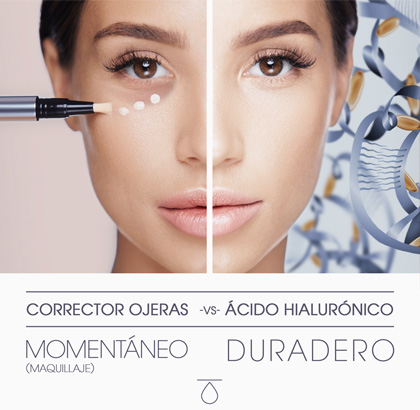
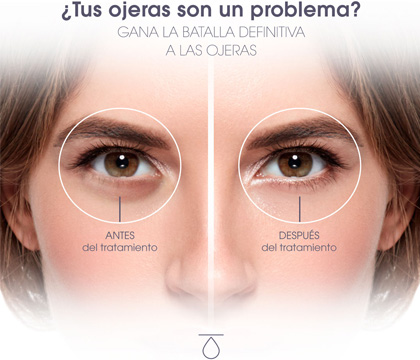
Why do bags under the eyes appear?
Aging reduces skin elasticity, causing flaccidity. However, volume is also lost as the adipose tissues break down over time. The area between the lower eyelid and the upper cheek region is known as the lacrimal canal and is a very delicate zone. As we grow older, this zone becomes thinner, deeper, darker, and bags may appear. Treating this area therefore produces a more youthful, rested and vital appearance.
3.- Other fillings
Filling of perioral wrinkles, "bar code"
Filling of the perioral wrinkles (popularly known as "bar code" wrinkles) aims to minimize the vertical wrinkles along the skin surrounding both the upper and the lower lip.
This is a delicate area, since excessive volume at this level results in very poor aesthetic outcomes, causing the zone to look rather ape-like.
For this reason, hyaluronic acid used in this area must have specific reticulation characteristics, allowing it to spread very well in the tissue and produce hardly no increase in volume.
This is the area ideally suited to the “blanching” technique.
"Blanching" consists of filling performed with a needle, in which the wrinkles are filled at a very superficial level. In this regard, the injected hyaluronic acid formulation must offer a series of rheological properties specific for use with this technique.
Filling of cheekbones
This technique affords marked cheekbones, and this volume in turn provides secondary firmness of the skin of the middle and lower thirds of the face.
In young patients this may simply constitute a desired aesthetic outcome. However, in older individuals it may help restore the volume lost with age, since over time we lose facial volume as bone mass is gradually lost.
Filling of cheeks
Filling of the cheeks helps restore the decrease in facial volume due to the loss of subcutaneous adipose tissue over the years, weight loss, or certain disease conditions.
This is the case for example of patients that suffer adipose tissue atrophy (lipoatrophy) due to the human immunodeficiency virus (HIV), where filling of the cheeks offers great benefits.
Adding volume to the cheeks produces a more youthful and healthy facial appearance.
Filling of the jawline
Filling of the jawline marks its limits and redefines the oval form of the face.
Adding volume to the jawline also firms the facial skin, reducing the appearance of wrinkles.
Filling of the jawline can also contribute to widening of the face, if desired. This results in a more masculine appearance desired by many men and also by some women who find their face to be too narrow.
Filling of the chin
Filling of the chin is a non-surgical alternative to chin prostheses.
This technique contours the shape of the chin. However, filling of the chin is particularly performed to increase volume and harmonize the facial profile.
Filling of marionette lines
Filling of marionette lines is almost always done in the case of filling of the nasolabial fold, since over time both zones are affected by the volume loss resulting from the decreased collagen production capacity associated with aging.
Filling of the earlobe
Filling of the earlobe is one of the simplest filling techniques and affords a marked rejuvenating effect in a zone that is more visible than we believe.
The earlobe is one of the regions that most loses supporting tissue with advancing age, losing its volume almost entirely and leaving a flaccid structure that produces a very aged appearance. Filling of the earlobe affords a rejuvenating effect and makes small details such as earrings much more attractive.
Filling of the nasogenian sulcus
Filling of the nasogenian sulcus or nasolabial line smoothens a sinking effect that becomes more noticeable with advancing age.
A very marked nasogenian sulcus produces a very aged but especially a more tired appearance.
Correction of this nasolabial line using filler materials affords very satisfactory results for the patient.
Rhinomodeling
Rhinomodeling, also known as non-surgical rhinoplasty, is able to balance asymmetries, correct defects or contour the tip of the nose.
This is done by filling the bridge of the nose where the zones of excess tissue have left a gap. The treatment affords uniformity, with the desired aesthetic effect. All this is done without having to enter the operating room.
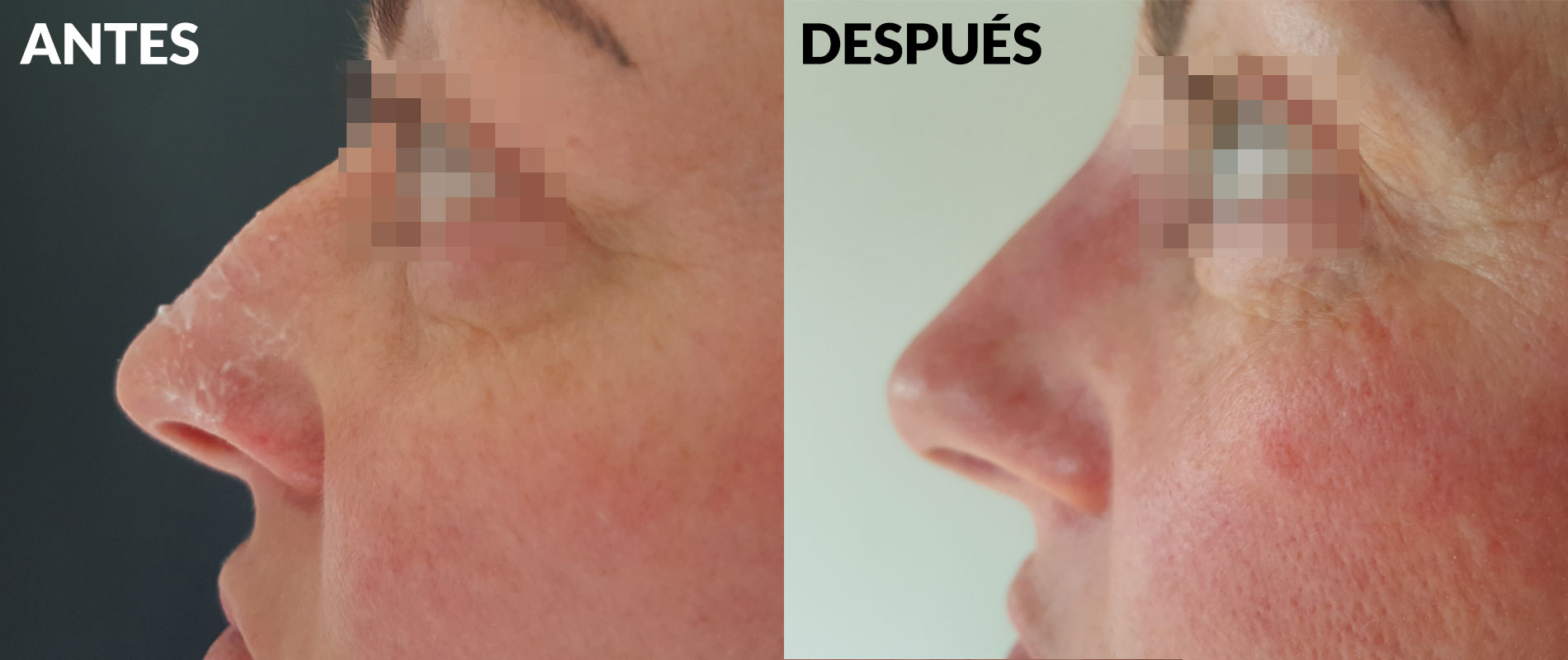
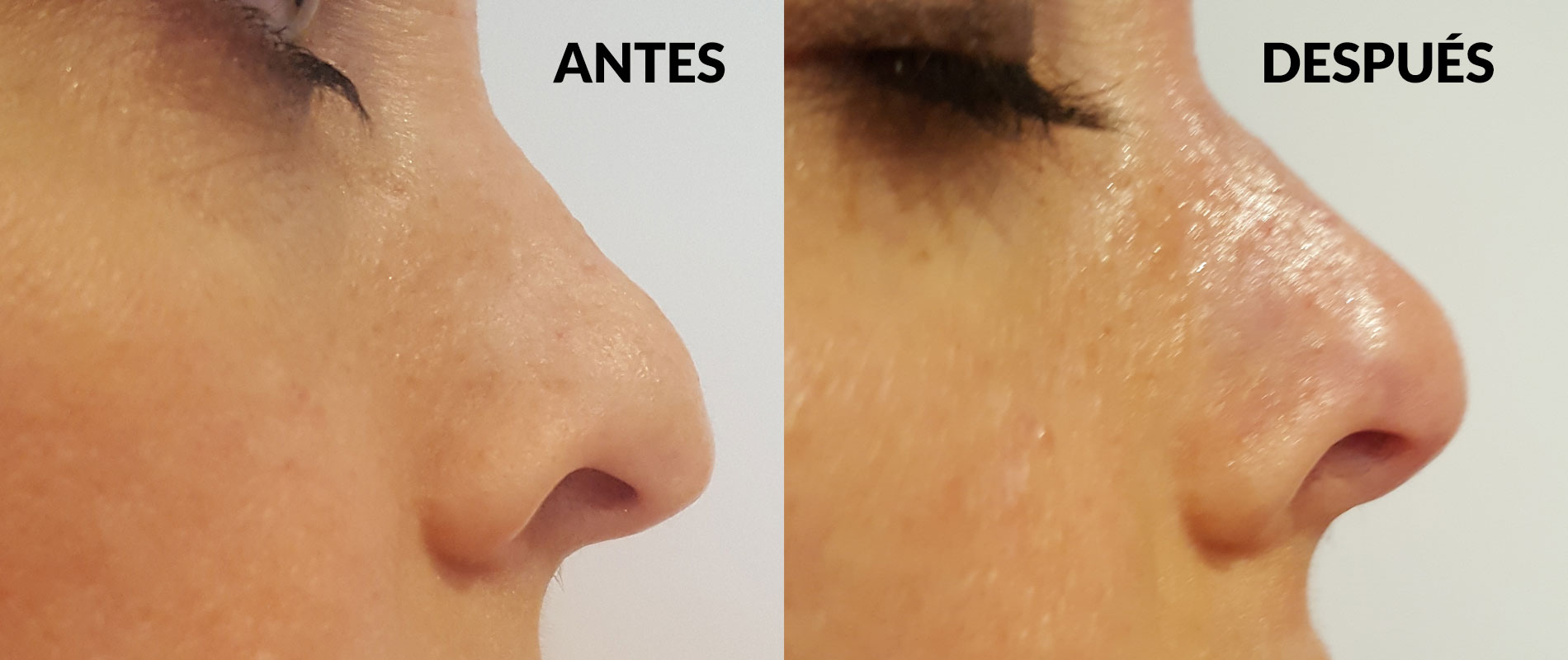
Skin redensification
A treatment for the face, neck and neckline based on hyaluronic acid and vitamins that corrects and prevents skin aging. It affords a lifting effect and leaves the skin hydrated, bright and elastic. In addition, its antioxidant action combats photoaging of the skin.
The treatment involves microinjections between the superficial and intermediate dermis of an exclusive patented formula composed of hyaluronic acid, 8 amino acids of which 5 are essential (such as leucine), three antioxidants including glutathione, two minerals, vitamin B6, and 0.3% lidocaine to improve patient comfort during the treatment.
It is recommended both for young skin as a preventive treatment against aging and for mature skin in patients who wish to regain youth.
Application is based on the 3X3X3 protocol: three sessions in the course of three weeks with doses of 3 ml. Maintenance treatment can also be carried out in the form of one session three times a year.
Benefits and effects of redensification of the skin of the face, neck and neckline:
- Rejuvenation of the skin
- Lifting effect
- Replacement of nutrients lost with age
- Promotion of natural collagen production
- Renewal of the skin
- Recovery and prolongation of skin youth
- Cellular regeneration and restructuring of the skin
- Antioxidant protection
- Densification of the papillary dermis
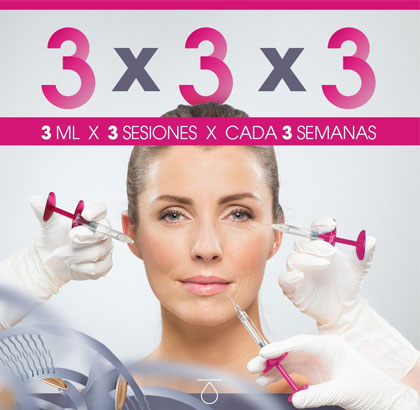
What are the different types of fillers?
There are many kinds of filler materials, though at present hyaluronic acid and calcium hydroxyapatite are the most commonly used fillers worldwide.
We presently only use reabsorbable fillers that can be infiltrated with a needle.
Hyaluronic acid and calcium hydroxyapatite infiltrations are the most widespread practice, due to their efficacy and especially safety. A range of filler materials have been developed in the course of the history of aesthetic medicine, though many of them gave rise to side effects that excluded them from use in this context.
Both hyaluronic acid and calcium hydroxyapatite have been long used as fillers, with very good results and safety; consequently, they have become the basic references in any filler product.
Facial fillings according to zone
Global facial fillings
When the aim is to minimize wrinkles and grooves, and afford global volume for the entire face, we employ fillers with certain characteristics and apply them in a more widespread way over the entire surface of the face, placing emphasis on complete wrinkles and grooves.
This is done for example when we want to restore lost volume of the cheeks, using skinboosters, and treat the upper lip ("bar code" wrinkles), neck or neckline; in this way we focus on the wrinkles and offer firmness and turgidity of the entire treated skin.
Fillers for volume enhancement in concrete zones
When planning volume enhancement in a concrete zone, the filler material must have other rheological characteristics, and infiltration is performed in a concrete manner in the zone we wish to enhance.
We thus fill lips, cheekbones, bags under the eyes, chin, earlobes or the jawline in techniques seeking to add masculine features to the face
Calcium hydroxyapatite
Calcium hydroxyapatite is the filler material with the greatest capacity to induce collagen formation. Thus, in addition to affording volume, it is one of the best available treatments for flaccidity.
Calcium hydroxyapatite is the mineral component of bone and is used as filler material in the form of gel microspheres.
It is reabsorbable and biocompatible, and causes no allergic reactions.
The first such product to be marketed in Spain was Radiesse, and this name is still used by most people when referring to calcium hydroxyapatite.
What does calcium hydroxyapatite do?
More or less volume will be afforded depending on the concentration at which the product is infiltrated, though what calcium hydroxyapatite does best is stimulate collagen production.
Calcium hydroxyapatite generates volume in the skin that is noticeable immediately. However, it is gradually absorbed in the course of the first month and starts to exert its collagen forming effect from the second month. The most visible effects are observed 4-6 months after infiltration.
The effect of calcium hydroxyapatite is thus seen to be progressive. Its stimulation of natural collagen synthesis results in firmness and elasticity of the skin, making it more turgid and especially smoother.
Advantages of treatment with calcium hydroxyapatite:
- It is the filler with the greatest capacity to induce collagen production
- Very many studies and years of experience with the material are available
- It does not cause allergies
- Filling is very long-lasting
- It is biodegradable and reabsorbable
- Progressive definitive effects
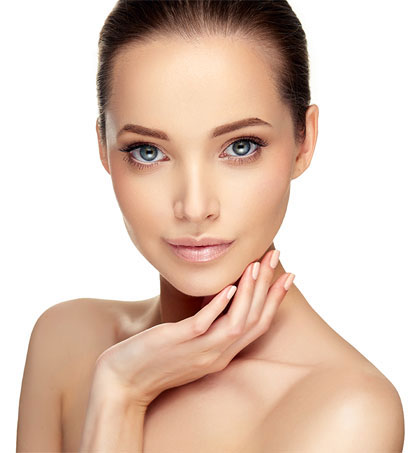
- Great firming effect
- Filling and volume enhancing effects
- Ambulatory, non-surgical treatment
- It can be performed at any time
Frequently asked questions
Facial fillers are infiltrated with needles or cannulas of variable caliber, depending on the density of the product.
Anaesthesia is usually used to improve patient comfort; only topical or infiltrating anaesthesia is employed, depending particularly on the treatment zone and technique used.
Hyaluronic acid is ideal for filling:
- Forehead
- Cheeks
- Neck and neckline
- Bags under the eyes
- Lips
- Cheekbones
- "Bar code" wrinkles
- Nasogenian sulcus
- Marionette lines
- Chin
- Nose
- Jawline
- Cheeks
- Neck
- Cheekbones
- Nose
- Nasogenian sulcus
- Marionette lines
- Chin
- Jawline
Related treatments
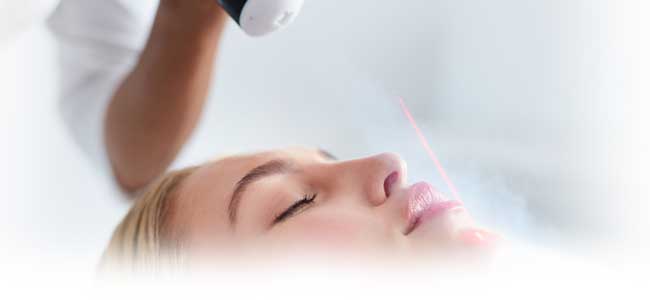
Facial CO2 laser
If your skin is aged, has sun damage, stretch marks, scars... CO2 laser resurfacing is the solution. The skin is completely renewed, wrinkles disappear or are reduced to a minimum.
The most effective and complete facial aesthetic medicine treatment.
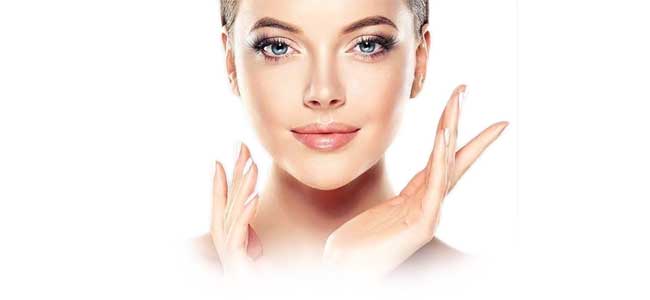
Treatment with neuromodulators
The star treatment to treat expression wrinkles. A treatment that gives our face a feeling of rest, freshness and good humour.
The most performed medical-aesthetic treatment in the world.
Come to Artemédica, a facial aesthetic medicine centre in Murcia.
If you want a toned and luminous face, with elastic and smooth skin, get in touch with us so that we can carry out a diagnosis and propose the most effective facial aesthetic medicine treatment for you.
